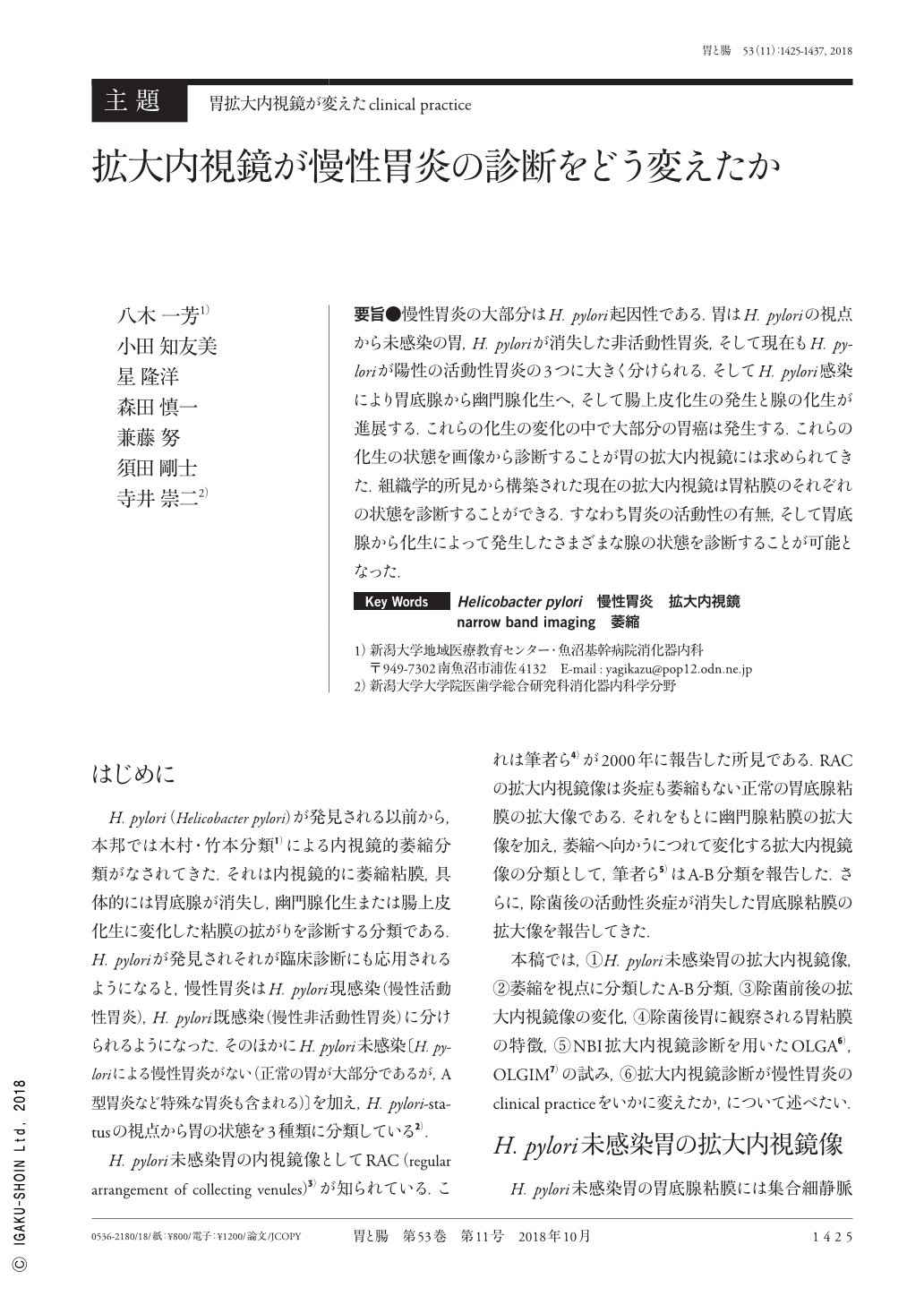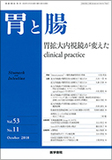Japanese
English
- 有料閲覧
- Abstract 文献概要
- 1ページ目 Look Inside
- 参考文献 Reference
- サイト内被引用 Cited by
要旨●慢性胃炎の大部分はH. pylori起因性である.胃はH. pyloriの視点から未感染の胃,H. pyloriが消失した非活動性胃炎,そして現在もH. pyloriが陽性の活動性胃炎の3つに大きく分けられる.そしてH. pylori感染により胃底腺から幽門腺化生へ,そして腸上皮化生の発生と腺の化生が進展する.これらの化生の変化の中で大部分の胃癌は発生する.これらの化生の状態を画像から診断することが胃の拡大内視鏡には求められてきた.組織学的所見から構築された現在の拡大内視鏡は胃粘膜のそれぞれの状態を診断することができる.すなわち胃炎の活動性の有無,そして胃底腺から化生によって発生したさまざまな腺の状態を診断することが可能となった.
A majority of chronic gastritis cases are caused by Helicobacter pylori infection. From the perspective of H. pylori infection, the condition of stomach is categorized into three groups:no infection, inactive gastritis that indicates the disappearance of H. pylori, and active gastritis that indicates H. pylori-positive currently. An infection caused by H. pylori induces various metaplasia, such as pyloric metaplasia and intestinal metaplasia, during which gastric cancer occurs. We developed a magnifying endoscopic diagnosis based on the histological findings of the fundic gland mucosa and pyloric gland and intestinal metaplasia. Furthermore, we determined whether the chronic gastritis is active or inactive with the use of magnifying endoscopy. Currently, the gastric cancer risk level can be identified based on either OLGA or OLGIM, which has been employed in Western countries, using NBI magnifying endoscopy.

Copyright © 2018, Igaku-Shoin Ltd. All rights reserved.


